
If I had a euro/dollar/pound for every time a review for one of my books has begun with ‘I don’t normally read this type of book, but…’ or ‘I only read this because a friend said I must read it…‘ and ended with a 5-star super-enthusiastic review, I’d be able to drink champagne every day.
Perhaps the sales info on the retailer pages is giving out the wrong message. Perhaps my covers aren’t conveying the story inside. No, I’m 100% sure it’s not that second one after Jessica Bell’s inspired new images for 2019!
Or perhaps it’s something else entirely…
A different book world?
Every book has its own world whether it’s outer space, inner space, a run-down housing estate, ancient Rome, eighteenth century high seas, a dilapidated Scottish castle or the local supermarket. Some of us even speculate in an alternative timeline. The author builds these worlds in her/his mind then opens the doors to that world and beckons the reader to enter.
But how attractive or repellent is that world to a reader?
I don’t mean whether it’s full of flowers, light and love or a gritty, dangerous and desperate place, but how much curiosity it arouses before the reader even turns the first page. Is its premise likely to stir something in a reader? Is it something they might well have been curious about? Does it resonate ages old mystery or a shared universal theme?
Same old, same old vs. something entirely different, possible scary or disturbing?
We all love comfort books, especially when we’re feeling down, the weather is atrocious or something upsetting in our lives has left us shattered. And comfort can be a Regency romance, a wartime saga or a bloody psychological thriller – everybody’s different. But sometimes we find ourselves reading the same type of book/same setting/same basic story. Quietly, very quietly dissatisfaction murmurs in the background, then grows into boredom.

How often have you heard or read, ‘I knew how it would end within the first twenty pages‘ or ‘Nobody seems to write good books now’? You know the feeling yourself that when you go back to read an old favourite, it isn’t as good as you remember…
Of course, nobody is asking readers to read what they dislike, but it’s worth reading something different, even a galaxy away from your reading comfort zone, to find out whether you might make a new and exciting discovery.
‘I don’t read scifi or funny futuristic stuff.’
Yet Margaret Attwood’s The Handmaid’s Tale and The Testaments are fascinating millions who are entranced by the dystopian world of Gilead at the hard end of speculative fiction. Her world is horrifying, yet so relatable and full of characters we know: vulnerable, determined, embarrassed, afraid, resistant, ideological, anxious, accommodating, surviving. Scifi is always a trip of the imagination, but the best stories explore the human dilemmas, the characters’ reactions to them and to that world, and their consequent actions.
Written to market
If a writer is under contract to write a book in a certain setting, then the publishing house has probably carried out intensive market research or has wide experience of what sells. That book world is set and is often a purely commercial choice. Second World War has been very popular recently; readers of one 1940s book will graduate easily to another. If written on a popular trend, then that book world is well-established but could be viewed as predictable.
Independent thought
But if you write in a niche or outside the standard environments of popular books, be prepared to work harder at projecting the attractiveness of your world. How is it different from the one in the average thriller or romance? Does it go beyond the usual alien/vampire/werewolf story? Is it set in a era not the Tudors nor the Second World War? Is it in a country not usually written about?
Good writing technique – a vivid narrative with a purposeful story, no info-dumping and above all well-formed multi-faceted characters – will carry a book world through to the reader hopefully to the extent they will be so absorbed by it that they will clamour for more.
But the key thing to remember is that just as writers are all different, readers are all different. Some will ‘get’ your world, others will walk away unmoved. We cannot all like all the same things – that would make us a very dull society. As writers, we should write to grab the reader by our scintillating and fascinating book worlds. As readers, we should venture out down new roads, even if there are hidden bends, We might end up somewhere truly wonderful.
 Photo by Sara Hammarbäck
Updated 2024: Alison Morton is the author of Roma Nova thrillers – INCEPTIO, CARINA (novella), PERFIDITAS, SUCCESSIO, AURELIA, NEXUS (novella), INSURRECTIO and RETALIO, and ROMA NOVA EXTRA, a collection of short stories. Audiobooks are available for four of the series. Double Identity, a contemporary conspiracy, starts a new series of thrillers. JULIA PRIMA, Roma Nova story set in the late 4th century, starts the Foundation stories. The sequel, EXSILIUM, is now out.
Find out more about Roma Nova, its origins, stories and heroines and taste world the latest contemporary thriller Double Identity… Download ‘Welcome to Alison Morton’s Thriller Worlds’, a FREE eBook, as a thank you gift when you sign up to Alison’s monthly email update. You’ll also be among the first to know about news and book progress before everybody else, and take part in giveaways.
If you enjoyed this post, do share it with your friends!Like this:Like Loading...
 Delighted to welcome Helen Hollick back to the blog. Helen, her husband and adult daughter moved from north-east London in January 2013 after finding an eighteenth-century North Devon farmhouse through being on BBC TV’s popular Escape to The Country. The thirteen-acre property was the first one shown – and it was love at first sight. Helen enjoys her new rural life, and has a variety of animals on the farm, including Exmoor ponies, dogs, cats, hens, ducks and geese and her daughter’s string of show jumpers. Delighted to welcome Helen Hollick back to the blog. Helen, her husband and adult daughter moved from north-east London in January 2013 after finding an eighteenth-century North Devon farmhouse through being on BBC TV’s popular Escape to The Country. The thirteen-acre property was the first one shown – and it was love at first sight. Helen enjoys her new rural life, and has a variety of animals on the farm, including Exmoor ponies, dogs, cats, hens, ducks and geese and her daughter’s string of show jumpers.
First accepted for publication by William Heinemann in 1993 – a week after her fortieth birthday – Helen then became a USA Today Bestseller with her historical novel, The Forever Queen (titled A Hollow Crown in the UK) with the sequel, Harold the King (US: I Am the Chosen King), novels that explore the events that led to the Battle of Hastings in 1066. Her Pendragon’s Banner Trilogy is a fifth-century version of the Arthurian legend, and she also writes the pirate-based nautical adventure/fantasy series, The Sea Witch Voyages, where you can read more about Jesamiah Acorne, son of Charles St Croix – and about the Doones.
Despite being impaired by the visual disorder of glaucoma, she is also branching out into the quick read novella, ‘cosy mystery’ genre with the Jan Christopher Mysteries, set in the 1970s. The first in the series, A Mirror Murder, incorporates her own often hilarious memories of working for thirteen years as a library assistant.
Her non-fiction books are Pirates: Truth and Tales and Life of a Smuggler and she is planning on writing about the ghosts of North Devon (in particular, those who are resident in her house). She also runs a news and events blog and a Facebook page for her village, and supports her daughter’s passion for horses and showjumping.
Helen is the organiser behind the recently released Historical Stories of Exile. She knows a thing or two about pirates, the mysterious origin of the Doones and nefarious goings-on in South West England!
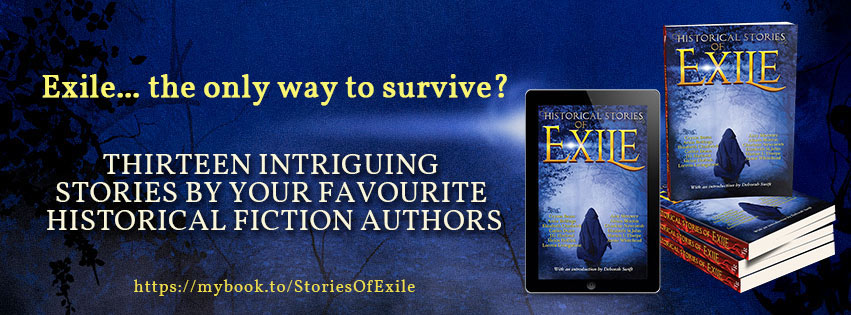
In the autumn of 2004, my (ex) agent suggested I should write something other than historical fiction. I suggested pirates, after all Jack Sparrow was – with the first Pirates of the Caribbean movie – a massive hit. I liked the idea. I loved the movie but wanted to read something similar – a rollocking nautical yarn with a touch of fantasy. I’d found several good young adult adventures but nothing for adults. And I wanted ‘adult’, something with a bit of ‘spice’, if you get my drift.
I went on holiday to Dorset, England and took some non-fiction books about real pirates with me to start researching. By the end of the week, I had a pile of historical notes from the early 1700s and several ideas for an exciting pirate-based plot with some plausible supernatural elements. No main male protagonist though. I went for a walk on the beach, sat on some rocks, looked up and saw him standing a few yards away. My pirate in full regalia. He nodded, touched the brim of his three-corner hat, his gold acorn-shaped earring glinting. “Hello, Jesamiah Acorne,” I said.
Was he my imagination or had I seen a ghost? Whatever he was – is – he has been the lead hero of six nautical adventures and one shorter novella ever since: the Sea Witch Voyages.

The agent rejected Sea Witch, claiming that ‘adults are not interested in pirates.’ We parted company and I went solo as an indie writer, with the Sea Witch Voyages becoming a popular series for many adult readers.
By Voyage Four, Ripples in the Sand, I decided to bring Jesamiah, his white witch wife Tiola, and his ship, Sea Witch from the Caribbean to England, North Devon to be precise, the area around the wild remoteness of Exmoor. Which gave me another idea…
 Exmoor as it is today – ©Free- Pixabay There is a classic tale associated with Exmoor: R.D. Blackmore’s Lorna Doone. Descendants of the Doone family of outlaws were just what I needed for my pirate’s adversaries. Thus, Sir Ailie Doone and his dastardly grandson, Ascham, were created.
These characters, Ascham Doone in particular, have now appeared in three Voyages, Ripples in the Sand, On the Account and Gallows Wake. As with any writer of a fictional series, I needed background to my characters. For Jesamiah and Tiola, I have a full biography, but I was curious about the Doones.
Blackmore set his tale in a location familiar to him, using real places (the village of Oare close to Badgeworthy Water on Exmoor, for instance,) and even local family names – the Ridds being one of these.
But were the Doones ‘real’? If so, who were they, where did they come from and how did they end up as outlaws on Exmoor? I have no idea from where Blackmore garnered his information or inspiration, but in 1901 – too late for him to use, as Lorna Doone was published in 1869 – Ida M. Brown wrote a pamphlet about the Doones for the West Somerset Free Press: https://www.lerwill-life.org.uk/history/doones.htm.
Her claim was that she had researched the Doones and discovered their identity as a noble family accused unjustly of murder and subsequently exiled from Doune Castle in Scotland. She gave dates, the family tree and a plausible account. Unfortunately, it seems that she made most of it up, basing her ‘facts’ on a few known truths but embellishing the rest.
So the Doones, like my Captain Jesamiah Acorne, are characters of imagination, but this is all the better for writers of fiction, for we can make things up to suit our galloping minds and the appetite of our enthusiastic readers.
For my contribution to the anthology Historical Stories of Exile I decided to delve into the ‘history’ of the Doone clan, and devise a suitable explanation of how they ended up on Exmoor – while incorporating Jesamiah himself and his smuggler father, Charles St Croix. Who knows, in several years’ time my explanation might be interpreted as fact!
———
Connect with Helen
https://helenhollick.net
Amazon Universal link: https://viewauthor.at/HelenHollick
Blog: https://ofhistoryandkings.blogspot.com/
Newsletter: https://tinyletter.com/HelenHollick
X/Twitter: @HelenHollick
———

Alison Morton is the author of Roma Nova thrillers – INCEPTIO, CARINA (novella), PERFIDITAS, SUCCESSIO, AURELIA, NEXUS (novella), INSURRECTIO and RETALIO, and ROMA NOVA EXTRA, a collection of short stories. Audiobooks are available for four of the series. Double Identity, a contemporary conspiracy, starts a new series of thrillers. JULIA PRIMA, Roma Nova story set in the late 4th century, starts the Foundation stories. The sequel, EXSILIUM, will be out in February 2024.
Find out more about Roma Nova, its origins, stories and heroines and taste world the latest contemporary thriller Double Identity… Download ‘Welcome to Alison Morton’s Thriller Worlds’, a FREE eBook, as a thank you gift when you sign up to Alison’s monthly email update. You’ll also be among the first to know about news and book progress before everybody else, and take part in giveaways.
If you enjoyed this post, do share it with your friends!Like this:Like Loading...
 I’m delighted to welcome Amy Maroney back to the blog to talk about being in ‘Exile’. Amy studied English Literature at Boston University and worked for many years as a writer and editor of nonfiction. She lives in Oregon, U.S.A. with her family. When she’s not diving down research rabbit holes, she enjoys hiking, dancing, traveling, and reading. I’m delighted to welcome Amy Maroney back to the blog to talk about being in ‘Exile’. Amy studied English Literature at Boston University and worked for many years as a writer and editor of nonfiction. She lives in Oregon, U.S.A. with her family. When she’s not diving down research rabbit holes, she enjoys hiking, dancing, traveling, and reading.
Amy is the author of The Miramonde Series, an award-winning historical fiction trilogy about a Renaissance-era female artist and the modern-day scholar on her trail. Her new historical suspense series, Sea and Stone Chronicles, is set in medieval Rhodes and Cyprus.
Amy is one of the contributors to the recently released Historical Stories of Exile. She knows a thing or two about writing captivating and lyrical historical fiction! Let yourself be entranced by a queen’s story of mistrust, exile and hope.
As is often the case with women in history, very little is known about the medieval Queen Charlotta of Cyprus (she is also known as ‘Charlotte’ and ‘Carlotta’). Born around 1444, Charlotta was the only surviving child of King Jean II of Lusignan and his wife Eleni Palaeologina, princess of Morea.
King Jean was a genial and ineffective ruler who loved hunting, hawking, and entertaining. The French Lusignan dynasty’s glory days had ended with his grandfather King Janus and grandmother Queen Charlotte I. By Jean’s era, three centuries of lavish living coupled with a weak military presence had taken a drastic toll. The Genoese seized control of the main port city, Famagusta; the Mamluks of Egypt only paused their attacks on Cyprus thanks to tribute payments to their sultan; and the Venetians underwrote many of King Jean’s expenses, miring the kingdom in crippling debt.

Meanwhile, animosity simmered within the court. Queen Eleni was a proud Greek and a dominating personality. She purportedly bit (or cut off) her rival Marietta’s nose when she found the woman in bed with her husband. Jean and Marietta’s son, Jacques (also known as Jacco the Bastard) was a handsome, charismatic bully with a thirst for power.
Princess Charlotta lived with her mother and various Greek attendants; her understanding of French was rudimentary at best. At about 13, she was married to Prince João of Coimbra (Portugal). The young couple moved from the royal palace to a house elsewhere in the Cyprus capital of Nicosia, angering Queen Eleni.
Tensions grew until Prince João died under mysterious circumstances; the queen’s chamberlain was blamed. In a royal tit-for-tat, the queen’s chamberlain was then murdered. Palace gossips said Charlotta had asked Jacco to arrange the killing.
Before he could be punished, Jacco fled for the island of Rhodes and the hospitality of the Knights Hospitaller. Meanwhile, Charlotta grieved her dead husband and awaited a new betrothal, this time with her first cousin Louis of Savoy.
Queen Eleni fought the betrothal fiercely, for in the Greek Orthodox tradition, marrying a first cousin was an unforgivable sin. In 1458, both Queen Eleni and King Jean died. Charlotta became queen, though she’d had no training for the job.
Jacco sailed to Egypt and charmed the Mamluk Sultanate; by the time Charlotta married Louis of Savoy, a groundswell of popular support for Jacco as king was sweeping over the island of Cyprus.
The powerful barons who had served her father as council members now whispered in Charlotta’s ear. Her husband Louis proved to be a weak leader. When Charlotta was 16, she moved her court into the massive coastal fortress of Kyrenia, bracing for a siege.
 Kyrenia Castle in Cyprus, where Charlotta was blockaded for three years (Photo A.Savin, WikiCommons) Jacco and his army of Mamluk warriors sailed to Cyprus in 1460, determined to seize power. Unfortunately, Charlotta’s husband, Louis, was more interested in finding a source for his beloved milk-fed veal than making plans for war.
The fate of the kingdom of Cyprus balanced on a knife-point, and Charlotta took it upon herself to save the day. She begged allies all over the West to help fund her war chest. She readied the fortress of Kyrenia for a siege. She ransomed her own jewelry and her kingdom’s treasures, desperate to keep her throne.
When all seemed lost, she set sail on the Mediterranean Sea, traveling through wind and waves in search of aid, pleading with men of power for help.
The story I wrote for the Exile anthology captures a critical moment near the end of her reign, when Queen Charlotta asks her allies the Knights Hospitaller to give her wise counsel. Then, when all seems lost, she heads back to sea for one last-ditch effort to preserve her throne—no matter the cost.
———
Connect with Amy
Website: https://www.amymaroney.com/
Twitter: twitter.com/wilaroney
Facebook: www.facebook.com/amymaroneyauthor
Instagram: www.instagram.com/amymaroneywrites/
Pinterest: pinterest.com/amyloveshistory/
Book Bub: www.bookbub.com/profile/amy-maroney
Amazon Author Page: author.to/AmyMaroneyAmazonPage
Goodreads: www.goodreads.com/author/show/15831603.Amy_Maroney
———
Read Amy’s latest story in the Sea and Stone Chronicles.
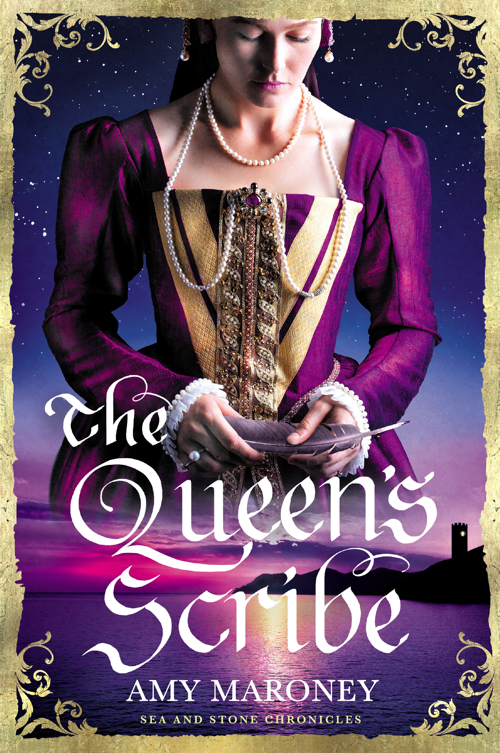 The Queen’s Scribe The Queen’s Scribe
A broken promise. A bitter conflict. And a woman’s elusive chance to love or die.
1458. Young Frenchwoman Estelle de Montavon sails to Cyprus imagining a bright future as tutor to a princess. Instead, she is betrayed by those she loves most—and forced into a dangerous new world of scheming courtiers, vicious power struggles, and the terrifying threat of war.
Determined to flee, Estelle enlists the help of an attractive and mysterious falconer. But on the eve of her escape, fortune’s wheel turns again. She gains entry to Queen Charlotta’s inner circle as a trusted scribe and interpreter, fighting her way to dizzying heights of influence.
Enemies old and new rise from the shadows as Estelle navigates a royal game of cat and mouse between the queen and her powerful half-brother, who wants the throne for himself.
When war comes to the island, she faces a brutal reckoning for her loyalty to the queen. Will the impossible choice looming ahead be Estelle’s doom—or her salvation?
With this richly-told story of courage, loyalty, and the sustaining power of love, Amy Maroney brings a mesmerising and forgotten world to vivid life. The Queen’s Scribe is a stand-alone novel in the Sea and Stone Chronicles collection.
Buy Amy’s book here: https://mybook.to/QueensScribe (Goes to your local Amazon store and other retailers) and is also available on Kindle Unlimited.
Alison Morton is the author of Roma Nova thrillers – INCEPTIO, CARINA (novella), PERFIDITAS, SUCCESSIO, AURELIA, NEXUS (novella), INSURRECTIO and RETALIO, and ROMA NOVA EXTRA, a collection of short stories. Audiobooks are available for four of the series. Double Identity, a contemporary conspiracy, starts a new series of thrillers. JULIA PRIMA, Roma Nova story set in the late 4th century, starts the Foundation stories. The sequel, EXSILIUM, will be out in January 2024.
Find out more about Roma Nova, its origins, stories and heroines and taste world the latest contemporary thriller Double Identity… Download ‘Welcome to Alison Morton’s Thriller Worlds’, a FREE eBook, as a thank you gift when you sign up to Alison’s monthly email update. You’ll also be among the first to know about news and book progress before everybody else, and take part in giveaways.
If you enjoyed this post, do share it with your friends!Like this:Like Loading...
 I’m delighted to welcome Anna Belfrage back to the blog, this time to talk about her short story, The Unwanted Prince. Had Anna been allowed to choose, she’d have become a time-traveller. As this was impossible, she became a financial professional with three absorbing interests: history, romance and writing. Anna always writes about love and has authored the acclaimed time travelling series The Graham Saga, set in 17th century Scotland and Maryland, as well as the equally acclaimed medieval series The King’s Greatest Enemy set in 14th century England. I’m delighted to welcome Anna Belfrage back to the blog, this time to talk about her short story, The Unwanted Prince. Had Anna been allowed to choose, she’d have become a time-traveller. As this was impossible, she became a financial professional with three absorbing interests: history, romance and writing. Anna always writes about love and has authored the acclaimed time travelling series The Graham Saga, set in 17th century Scotland and Maryland, as well as the equally acclaimed medieval series The King’s Greatest Enemy set in 14th century England.
More recently, she has published Her Castilian Heart, the third in her medieval The Castilian series set against the conquest of Wales. She has just released Times of Turmoil, the sequel to her 2021 historical fiction/time travel romance, The Whirlpools of Time.
Anna is one of the contributors to the recently released Historical Stories of Exile. She knows a thing or two about writing captivating historical fiction! Let yourself be entranced by a poignant story of heartache and exile.
I have some historical periods I steer clear of.
Correction: I have some historical periods I used to stay clear of, because one of those periods is the 16th century—I am no fan of the Tudors—but there I was, considering just what to write about for the short story collection Historical Stories of Exile and who wormed his way into my head? A little 16th century prince. A real prince, by the way, not some invented character.

“Real prince?” My protagonist’s uncle—Johan III of Sweden—scoffs loudly. “How can you even call him that? His mother was the illiterate daughter of a sergeant!”
True, that, and the hoity-toity Swedish nobility never let little Karin forget just how lowborn and insignificant she was.
“Well, she was—is,” Johan says. “Not like my wife.” He beams at his lady—and I forgive Johan a lot for his constant affection for his Polish princess, Katarina Jagellonica. She was well past the first blush of youth when they met, but Johan knew a gem when he saw one, and these two very intelligent and well-educated peeps developed a strong and, by all accounts, good marriage. Even when they were locked up for years by Johan’s brother, Erik XIV. (Because Johan, naughty boy that he was, snuck off to marry Katarina without big brother’s permission. And Erik did NOT like that Johan ended up with a wife of such impeccable lineage as Katarina’s)
By now, I am thinking you’ve caught on to the fact that Erik and Johan weren’t exactly the closest of brothers. That’s what happens when Daddy (Gustav I of Sweden) instils ambition as one of the most important qualities a royal prince should have. If there’s just one kingdom, just one throne, it follows that all brothers will set their sight on the same prize, right?
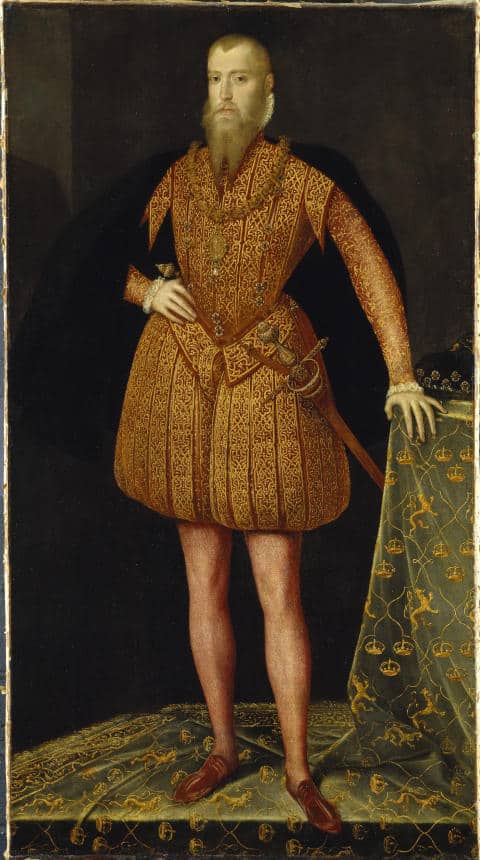 Erik of Sweden – courting portrait But Erik was firstborn, which is why he became king. Erik was handsome, a great dancer, witty, well-educated and quite convinced he was the best thing since sliced bread. He never understood how Elizabeth of England could turn him down, especially not given the absolutely gorgeous portrait of himself he sent her.
Erik was determined to marry for dynastic reasons—yet another of Daddy’s lessons. But the moment he met Karin Månsdotter, all sense flew out of him. Well, so said his brothers and his nobles. Erik, however, was entranced by this young girl, who was so soothing to be with.
Being anything but a fool, Erik at first installed Karin as his mistress. He was still planning on marrying an adequate princess with whom to beget an heir. But time passed and Karin presented him with a daughter and a son, so he began reconsidering. Plus, there was also the fact that Erik was . . . erm . . . somewhat unstable—and prone to see conspiracies behind every tapestry adorning his castles.
When he formally wed Karin, legitimised his children—three huzzahs for little Prince Gustav!—and had Karin crowned as his queen, every single one of his nobles concluded he’d gone bonkers. Not entirely untrue, unfortunately, because Erik was afflicted by bouts of madness. While under the grip of one such attack, our Erik stormed off to where he was holding some members of the Sture family captive and murdered them by his own hand. The Sture family was one of the most prominent in Sweden—which was why Erik had locked father and son up, suspicious they might want to retake a throne they had as much right to as he did.
This heinous act shocked Sweden. It also gave Johan (who had, in fact, been conspiring behind the tapestries) the perfect excuse to usurp the throne. Erik was bundled off to captivity, and with him went his wife and their children. At first.
 1864 painting of Karin by Erik Johan Löfgren Years of being moved from one castle to the other—a living ex-king was a dangerous threat to the new king—ended for Karin and her children when, one day, they were forcibly removed from Erik’s presence and sent off to Finland. Karin had been given land there, and with the Baltic sea between them, Johan didn’t have to see his parvenue sister-in-law, or her children. Except of course that if Erik was a threat, well, then so was little Gustav, and Johan had his own son, Sigismund, to protect.
What happens to little Gustav, I leave for you to discover in Historical Stories of Exile. And as to Erik XIV, some years after having been separated from his Karin, he died. Just like that. Or not, as it turned out, because someone had laced his pea-soup with a very, very deadly dose of arsenic. And yes, I believe we can safely assume it was done on brother Johan’s orders!
And they say Romans were the arch conspirators!
Find out more about Erik XIV: https://www.annabelfrage.com/2014/02/08/the-jilted-suitor/
About Johan III and Katarina? (and Tsar Ivan. Quite the triangle, that . . .): https://www.annabelfrage.com/2020/07/10/princess-wife-prisoner-and-would-be-hostage/
———-
Connect with Anna
Website: www.annabelfrage.com
Twitter: https://twitter.com/abelfrageauthor
Bluesky: https://bsky.app/profile/abelfrageauthor.bsky.social
Facebook: https://www.facebook.com/annabelfrageauthor
Instagram: https://instagram.com/annabelfrageauthor
Book Bub: https://www.bookbub.com/profile/anna-belfrage
———
Read Anna’s latest book (yet another story set in a time she never, ever intended to write about, namely the 18th century)
Times of Turmoil
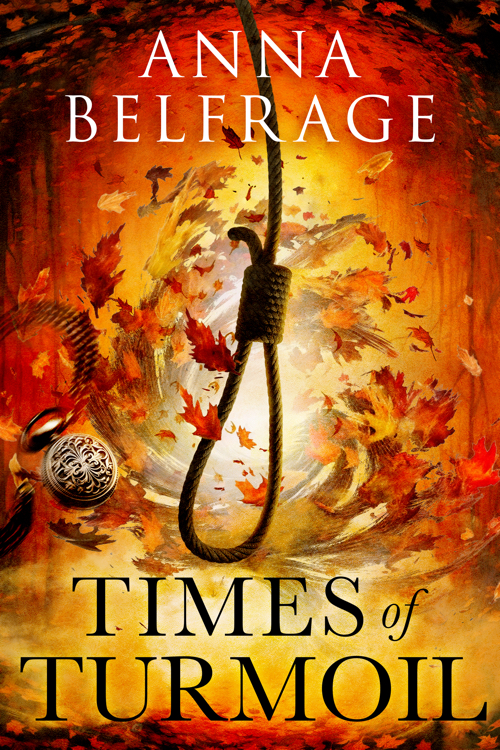 1718, and Duncan Melville and his time traveller wife, Erin, are concentrating on building a peaceful existence for themselves and their twin daughters. Difficult to do, when they are beleaguered by enemies. 1718, and Duncan Melville and his time traveller wife, Erin, are concentrating on building a peaceful existence for themselves and their twin daughters. Difficult to do, when they are beleaguered by enemies.
Erin Melville is not about to stand to the side and watch as a child is abused—which is how she makes deadly enemies of Hyland Nelson and his family.
Then there’s that ghost from their past, Armand Joseph Chardon, a person they were certain was dead. Apparently not. Monsieur Chardon wants revenge and his sons are tasked with making Duncan—and his wife—pay.
Things aren’t helped by the arrival of Duncan’s cousin, fleeing her abusive husband. Or the reappearance of Nicholas Farrell in their lives, as much of a warped bully now as he was when he almost beat Duncan to death years ago. Plus, their safety is constantly threatened as Erin is a woman of colour in a time and place where that could mean ostracism, enslavement or even death.
Will Duncan and Erin ever achieve their simple wish – to live and love free from fear of those who wish to destroy them?
Buy Times of Turmoil here: https://myBook.to/ToTABG (Goes to your local Amazon store and other retailers) and is also available on Kindle Unlimited.
Alison Morton is the author of Roma Nova thrillers – INCEPTIO, CARINA (novella), PERFIDITAS, SUCCESSIO, AURELIA, NEXUS (novella), INSURRECTIO and RETALIO, and ROMA NOVA EXTRA, a collection of short stories. Audiobooks are available for four of the series. Double Identity, a contemporary conspiracy, starts a new series of thrillers. JULIA PRIMA, Roma Nova story set in the late 4th century, starts the Foundation stories. The sequel, EXSILIUM, will be out in January 2024.
Find out more about Roma Nova, its origins, stories and heroines and taste world the latest contemporary thriller Double Identity… Download ‘Welcome to Alison Morton’s Thriller Worlds’, a FREE eBook, as a thank you gift when you sign up to Alison’s monthly email update. You’ll also be among the first to know about news and book progress before everybody else, and take part in giveaways.
If you enjoyed this post, do share it with your friends!Like this:Like Loading...
 Today I’m delighted to welcome Marian L Thorpe to my blog today. Taught to read at the age of three, words have been central to Marian’s life for as long as she can remember. A novelist, poet, and essayist, Marian has several degrees, none of which are related to writing. After two careers as a research scientist and an educator, she retired from salaried work and returned to writing things that weren’t research papers or reports. Today I’m delighted to welcome Marian L Thorpe to my blog today. Taught to read at the age of three, words have been central to Marian’s life for as long as she can remember. A novelist, poet, and essayist, Marian has several degrees, none of which are related to writing. After two careers as a research scientist and an educator, she retired from salaried work and returned to writing things that weren’t research papers or reports.
Her first published work was poetry, in small journals; her first novel was released in 2015. Empire’s Daughter is the first in the Empire’s Legacy series: second-world historical fiction, devoid of magic or other-worldly creatures and based to some extent on northern Europe after the decline of Rome. In addition to her novels, Marian has read poetry, short stories, and non-fiction work at writers’ festivals and other juried venues.
Marian’s other two passions in life are birding and landscape history, both of which are reflected in her books. Birding has taken her and her husband to all seven continents, but these days she’s mostly content to move between Canada and the UK.
Marian has contributed an evocative story featuring Olai the Northman, a story of loyalty and love for a falcon, to the recently released Historical Stories of Exile.

The gyrfalcon, largest of the falcon family, is a bird of the Arctic – and a bird highly valued in medieval falconry across Europe and Asia. Not only are they large enough to take down a swan or a crane, but in the white form, they are exceptional beautiful bird. Their hunting prowess, their size and beauty, and the great difficulty in obtaining them from the Arctic cliffs where they nest meant they were a falcon fit only for a king or emperor. Throughout the medieval period, gyrfalcons were often presented as gifts from one royal to another, and the gift that frames my story On Shining Wings is one of historical record. About 1225, Haakon IV of Norway sent hunters on a two-year expedition to Iceland to catch gyrfalcons for Henry III of England. The hunters brought back back three white and ten grey gyrfalcons, which, as Haakon explained in a letter to Henry, the extreme cold and difficulty of the expedition made these birds more precious than gold or silver.[i]
Nowhere (at least that I could find!) is it recorded who brought the birds from Norway to England, but it seemed reasonable to me that one of the men who’d captured the birds might be sent along to care for them on the voyage. After all, they’d been caring for them for two years and must have been both skilled in their feeding and maintenance, and, I would think, have grown attached to the birds. Olai, my character, is completely fictional—but he could well have existed.

Olai’s descent down the cliff to capture the fledgling gyrfalcons may or may not be how these birds were captured: I based it on stories from a work colleague, who had grown up in the Faroes in the 1950s and had used the described technique to take seabird eggs and chicks from the cliffs. But other than that imaginative recreation, almost all the rest of Olai’s duties are based on historical record. When he says that his lord de Hauville is paid more to feed the birds each day than he receives as a groom for the falcons, that’s based on, the records of the Exchequer, which records the wages of a groom as 1 ½ d a day in this period.[ii]
Olai’s lord de Hauville is an amalgam of real characters: the de Hauvilles were chief among the royal falconers during the early part of Henry III’s reign (and with sole care of the gyrfalcons); the de Hauville estate in Northamptonshire was one of their properties where birds were kept. But I couldn’t determine exactly which de Hauville – so he goes unnamed, reasonable since his mews groom Olai would almost certainly not think of him as anything but his lord.
The story Olai tells to his grandson within On Shining Wings is imaginative, based on my own love of the fenlands and washlands of East Anglia (an area favoured by Henry III for hunting heron and cranes) and forty-five years of birding (in which I’ve seen only one gyrfalcon in the wild). But it’s plausible – I hope!
[i] Thierry Buquet. The Gyrfalcon in the Middle Ages, an Exotic Bird of Prey (Western Europe and
Near East). Burnett, Charles; Van Den Abeele, Baudouin. Falconry in the Mediterranean Context During the Pre-Modern Era, 9, Droz, pp.79-98, 2021, Bibliotheca Cynegetica, 978-2-600-06236-7.
[ii] Robin S. Oggins. The Kings and Their Hawks: Falconry in Medieval England. Yale University Press, 2005.
———-
Connect with Marian
Website: www.marianlthorpe.com
Facebook: https://www.facebook.com/marian.thorpe.1
BlueSky: @marianlthorpe.bsky.social
———-
Read Marian’s novel:
Empress & Soldier
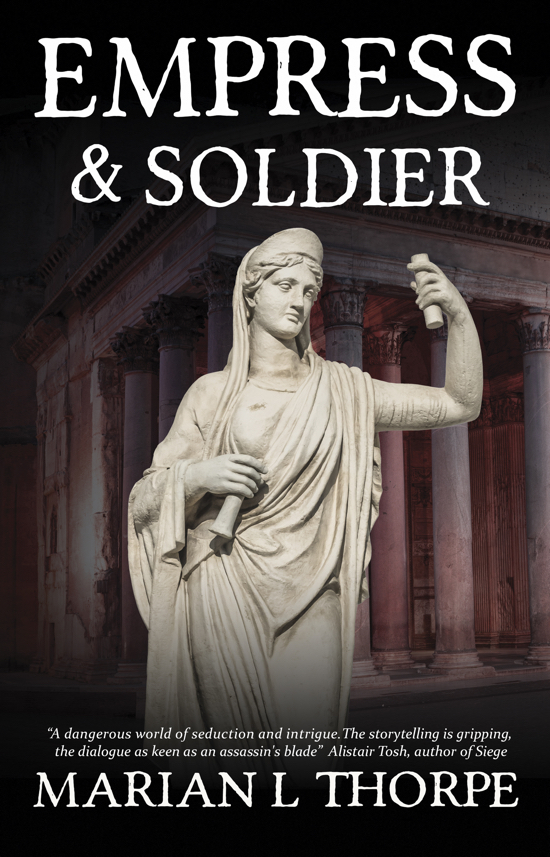 A boy of the night-time streets. A girl of libraries and learning.
Druisius, the son of a merchant, is sixteen when an order from his father that he can neither forgive nor forget drives him from home and into the danger and intrigue of the military.
Eudekia, a scholar’s daughter, educated and dutiful, is not meant to be a prince’s bride. In an empire at war, and in a city beset by famine and unrest, she must prove herself worthy of its throne.
A decade after a first, brief meeting, their lives intersect again. When a delegation arrives from the lost West, asking Eudekia for sanctuary for a princess and support for a desperate war, Druisius is assigned to guard them. In the span of a few weeks, a young captain will capture the hearts of both Empress and soldier in very different ways, offering a future neither could have foreseen.
A stand-alone novel that can also serve as a second entry point into the Empire’s Legacy series.
Buy Marian’s book here: https://books2read.com/b/empressandsoldier (Goes to your local Amazon store and other retailers)
Alison Morton is the author of Roma Nova thrillers – INCEPTIO, CARINA (novella), PERFIDITAS, SUCCESSIO, AURELIA, NEXUS (novella), INSURRECTIO and RETALIO, and ROMA NOVA EXTRA, a collection of short stories. Audiobooks are available for four of the series. Double Identity, a contemporary conspiracy, starts a new series of thrillers. JULIA PRIMA, Roma Nova story set in the late 4th century, starts the Foundation stories. The sequel, EXSILIUM, will be out in January 2024.
Find out more about Roma Nova, its origins, stories and heroines and taste world the latest contemporary thriller Double Identity… Download ‘Welcome to Alison Morton’s Thriller Worlds’, a FREE eBook, as a thank you gift when you sign up to Alison’s monthly email update. You’ll also be among the first to know about news and book progress before everybody else, and take part in giveaways.
If you enjoyed this post, do share it with your friends!Like this:Like Loading...
|
Subscribe to Blog via Email
Join 368 other subscribers.
Categories
Archive
|





























